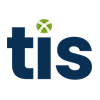Large corporates have complex relationships with banks due to the high volume of payments they process each day created by a multitude of internal systems. These relationships become even more complicated as a corporate grows by acquisition and/or internationally. This complexity creates challenges for treasury and IT departments which are faced with siloed data and stretched resources. There is a solution though. An Enterprise Payment Optimization platform can sit on top of a corporate’s tech stack and manage its entire payments ecosystem. Read on to learn more.
The complexity of corporate banking relationships
A large corporate can create thousands of payments each day to pay staff, open invoices with vendors and partners, or settle treasury transactions. This may be accomplished through file downloads from multiple internal systems such as ERPs, treasury management systems, or payroll applications to name just a few. These files typically need to be formatted and sent to the enterprise’s bank for execution using different channels e.g., SWIFT, EBICS, H2H, API etc. Depending on the nature of its business, and the type of payment, transactions may be executed in the form of an ACH, bank wire or even a check in the US and certainly a variety of other instruments and flavours globally depending on the country.
The sheer scale of this payments ecosystem leads to complex banking relationships.
In order to send outbound payments and receive the relevant balance and transaction reporting, a corporate needs to establish connectivity with every bank with which it has a relationship. Enterprises also need to update their connectivity to adapt to evolving legal and compliance regulations or changes to a provider’s requirements. Considering that the average number of banking relationships per European firm is 5.6, managing these connections can drain significant resources from both Treasury and the IT department.
The amount and the complexity of banking relationships increases as a corporate grows. The number of systems an enterprise must rely on to create payment files also rises when it creates a subsidiary, acquires another company (over 50,000 acquisitions took place in 2020 alone) or launches a new line of business. Each entity and their systems must be added to the corporate’s tech stack or risk a segregation of company data. All systems must be kept up to date which again requires maintenance and upgrades. This becomes ever more complicated when working with legacy solutions. Of course, if a corporate shrinks through divestitures, systems may need to be removed. Either way, the burden on the IT department rises.
Global operations increase complexity
Centralization is often not possible. Corporates may require local banking relationships and access for a variety of reasons:
- To ease / facilitate the collection of local payments
- To cater to customers and suppliers who typically prefer to pay locally
- To support / simplify the process of accessing local funding
- To have banking relationships in the same time zone as a subsidiary
- To process country-specific payment instruments, such as the RIBA in Italy
- To hold funds, that cannot be repatriated
- To adhere to regulations, such as paying tax from a local account
Banking relationships are more complex for corporates doing business globally. The currency component, trade terms and of course liquidity management are examples of this. Payment formats around the world vary as do the payment methodologies. Bank connectivity is also affected depending on what countries are involved. As noted, banks might prefer to receive information via a host-to-host connection or via SWIFT, but corporates also need to manage regional protocols such as EBICS in Europe and NACHA in North America. Each bank, in every country, may well have its own connectivity preferences which the treasury department will need to adapt to.
Likewise, compliance and security standards differ across countries and regions. Although there is overlap between regulations governing sanctions, AML and data privacy in many countries and regions, there are also differences. Treasury departments need to familiarise themselves with local nuances to make sure they stick to the rules when processing payments.
The challenges for treasury departments
Corporates want a centralized view of their payments data, but complex banking relationships lead to information silos. Data is one of the most valuable commodities for any business today, but managers can’t unlock its true value – and make informed decisions – if it’s stored in separate and unconnected databases. In terms of payment information, this lack of visibility can affect a corporate’s liquidity and profitability, increase its risk exposure to threats such as cybercrime and fraud and ultimately hamper its growth. Data silos also present logistical challenges such as inconsistencies in format, higher IT costs if several systems and servers are in use and security issues due to dispersed data controls.
The other problem with complex banking relationships is that they prevent economies of scale. As mentioned earlier, treasury employees must manage complex connectivity to process payments, taking up time and effort which could be redirected elsewhere. The same applies to the IT department’s job of integrating, maintaining, and upgrading connections. Inefficiencies increase costs and eat into a corporate’s bottom line.
These challenges are only likely to become more complicated over time.
Today, SWIFT uses the FIN standard for exchanging information on payments by sending messages in the MT format. However, the industry is in the process of transitioning to ISO 20022 which uses XML. SWIFT will support ISO from November 2022 on, and FIN until the deadline for migration in November 2025 for financial institutions. Banks using SWIFT must adopt ISO 20022 by November 2025, and many have already started requesting data in the XML format.
The implications for corporates are twofold. Firstly, they aren’t obliged to convert to the ISO standard by 2025 (in fact there is no deadline for corporates per se), however, companies will need to decide when and how to implement data conversion! Enterprises may begin receiving statements in the richer XML format as early as November 2022. Companies still using the MT format internally, may experience a disruption to back-office processes. This will be due to the conversion and subsequent possible truncation and / or (poor) mapping of XML to FIN. Secondly, at some point, over the next few years, it is expected that corporate systems providers e.g., ERPs, TMSs and payroll systems etc. will migrate to ISO 20022. Systems providers, banks and even the corporates themselves, may potentially choose different timelines to complete their migration. This complexity will present serious challenges in terms of resources, efficiency, accuracy and cost. The larger, the more global, and certainly the more fragmented a corporate’s systems and banking landscape, the more complex this migration will be.
The solution: Enterprise Payment Optimization (EPO)
Corporates can overcome the challenges presented by a complex banking landscape and achieve a holistic view of their payments data by taking advantage of Enterprise Payment Optimization (EPO). EPO provides an orchestration layer which sits above a corporate’s tech stack and helps to manage the connectivity between its banks and internal payment systems. A corporate can use this layer to support the efficient processing of payments company wide. Instructions from ERPs and other systems are submitted to the EPO platform of a vendor who automatically forwards these – based on agreed formats and channels – to the company’s various banks. Balance and transaction information is captured in the EPO layer while traveling in the opposite direction to the departments and systems which issued these instructions.
An EPO layer also helps a corporate leverage its global payments data because it can provide a single source of truth, across every department, subsidiary, and foreign branch. This visibility helps to streamline an enterprise’s payments workflow, improving regulatory risk compliance by standardizing security features across all systems and all data. Corporates can access an EPO platform and gain even greater insights into fraud reduction by working with TIS. Enterprises can tap into the 200+ strong client community maintained by TIS, a SaaS fintech, with over a decade of experience in a variety of industries. This experience helps clients to benchmark their payments performance, spot and eliminate weaknesses in their connectivity to systems and banks while improving security and compliance.
Another benefit provided by the TIS EPO platform is that it helps a corporate achieve economies of scale. Treasury departments can manage their systems and banking connectivity through TIS. This reduces the burden on IT departments as they can outsource complexity to a leading vendor. When new banks need to be added or legacy systems replaced, TIS will do the heavy lifting avoiding any interruptions in the payments process and therefore to business continuity. TIS supports the elimination of complexity by connecting with over 11,000 banks in more than 85 countries managing the largest format library in the world. TIS also takes responsibility for maintenance and upgrades, which includes helping companies to manage the transition from the FIN format to ISO 20022.
A proven track record
Our EPO platform consolidates a corporate’s payment information across all entities and systems breaking down departmental and geographic silos to present a single view of a company’s data. Our clients report that this helps to achieve near real-time transparency into payments and liquidity.
We work with banks all over the globe and provide appropriate formats for financial institutions to process payments or provide information. Data can be downloaded from back-office systems regardless of location through a variety of connections including APIs, direct plugins, or agents for transmission.
TIS helps enterprises to make payments and gather data, but this is just the beginning. We support better bank account management as well as data analytics. TIS works with best-of-breed vendors using a single-sign-on to utilize the very valuable information gathered and stored to assist in e.g., cash forecasting. TIS also supports its clients with cutting edge products and services to prevent and protect against fraud, support compliance, facilitate risk management and a lot more.
Bringing order to chaos
To continue growing, corporates must address the challenges originated through global reach, complex banking relationships, fragmented IT systems and siloed data. By creating an EPO layer, our solution captures and aligns payment and balance information, offering users several benefits:
- Obtain a holistic overview of payments data
- Lower risk exposure
- Future-proof payments infrastructure
- Reduce bank connectivity to a hygiene factor
- Cut costs and boost profitability
In short, TIS allows enterprises to simplify their payment operations by outsourcing complexity. For more information about how TIS can help you to reimagine enterprise payments browse our latest resources.



